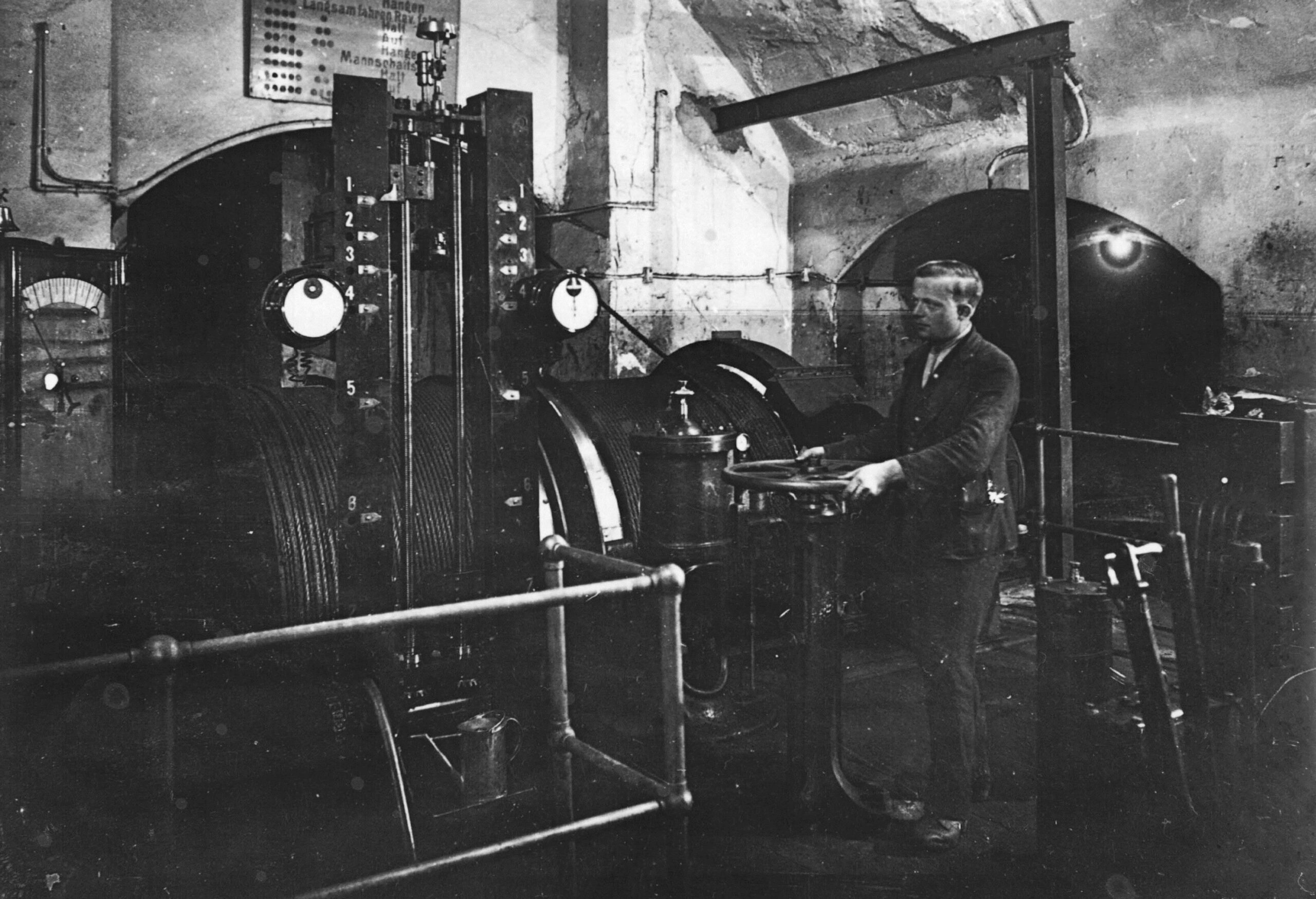Ruperti Adit
The image shows the entrance (portal)
of the Ruperti adit, which was started
in 1892 at an elevation of 1268 meters.
Four years later, at the same elevation
on the eastern side of Hochkeil, the Virgil
adit was started. On February 17, 1911, the
breakthrough (connection) took place, and
the total length of the two adits was now
6685 meters.
The Ruperti adit was the 3rd level (level)
of this mine, which, at its closure in 1977,
had a total of 11 levels and almost as many
intermediate levels (height difference
approx. 40 m), as well as a total of 42 km
of haulage drifts.
A milestone in Mühlbach‘s mining history
was the breakthrough in August 1917
through the main shaft to the Emili adit
located 400 meters lower. This allowed
the transport of ore through the mountain
to the processing plant in Mühlbach. Until
around 1955, the Ruperti adit, alongside
the Emili adit, was one of the most
significant adit systems on Mitterberg.
Today, the spring in the Ruperti adit is part
of the drinking water supply for Mühlbach
am Hochkönig.
Kids
What are ores?
Although there are over 6000 known minerals, less than a hundred are considered valuable and useful to us humans. We use these important minerals to build roads and houses and to make various products such as steel and electrical appliances. Think about the things you use every day: almost every one of them is made from materials extracted from these precious minerals!
Ores are minerals that contain a high proportion of gold, copper, iron, sulphur and silicon. An example of an ore is chalcopyrite, the main source of copper. Chalcopyrite is a shiny, metallic mineral with a unique colour, similar to the colour of a shiny trumpet.
What are ores?
Although there are over 6000 known minerals, fewer than a hundred are considered valuable and useful to us humans.
Ore minerals contain high concentrations of valuable elements. These can be metals such as gold, copper and iron or non-metals such as sulphur and silicon. We use these important minerals for the construction of roads and buildings and for the manufacture of various products such as steel and electrical wires. We rely on them in our daily lives, but in reality they are only found in small quantities on the earth's surface. In fact, most of the rocks in the Earth's crust are made up of a mixture of a few common minerals, known as rock-forming minerals.
Compared to rock-forming minerals, ore minerals - especially those containing metals - are less common. Special environmental conditions and processes are required to concentrate significant quantities on the earth's surface and form large ore deposits. These metals usually originate from hot, magmatic fluids that rise through cracks in the surrounding rock and deposit ore minerals as they cool.
In the former Mitterberg mining district in Mühlbach am Hochkönig, miners were particularly interested in chalcopyrite (CuFeS2), a brass-coloured metal mineral that is the main ore of copper.
What are ores?
Although there are over 6000 known minerals, less than a hundred are considered valuable and useful to us humans. We use these valuable minerals for the construction of roads and buildings and for the manufacture of various products such as steel and electrical wires.
Ore minerals are minerals that contain high concentrations of important elements that are crucial to industry and our daily lives. These elements can be metals such as gold, copper and iron, but also non-metals such as sulphur and silicon.
You might think that mines extract large quantities of these ores from the earth's surface. In reality, however, 98 % of the earth's crust consists of only 8 elements, mainly silicon (Si) and oxygen (O)! Therefore, most rocks on the surface are a mixture of some common minerals, the so-called rock-forming minerals, such as quartz and feldspar. Valuable elements and their ores occur in much smaller quantities compared to these rock-forming minerals.
Special environmental conditions and processes are required to concentrate these valuable elements and form ore deposits. If you look at a map of ore deposits around the world, you will see that they are unevenly distributed and related to certain tectonic conditions. Furthermore, not all ore deposits can be mined. They must be highly concentrated so that the operating costs do not exceed the value of mining.
There are many types of ore deposits, which differ in their formation process, their environment and the element(s) of interest. In the former Mitterberg mining district, in Mühlbach am Hochkönig, the copper deposit was formed by hot, magmatic, metal-bearing fluids that penetrated the soft phyllites of the greywacke zone and deposited these metals. An expression of this process are the large, thick veins of white quartz with chalcopyrite (CuFeS2) - the main ore of copper - and other metallic minerals such as galena (PbS) and pyrite (FeS2).

